Implementing government policies and programmes require effective communication. In this blog Ajith Chandran celebrates the International Day of Forests by throwing light on this year’s theme ‘Forest and Health’, and recollecting his experiences with using horizontal communication as an extension tool in community-based forest management.
CONTEXT
Every year on March 21, the International Day of Forests is observed to promote awareness on the value of forests and their contribution to the survival of life on Earth. The International Day of Forests in 2023 will have the theme ‘Forests and Health’, emphasising the vital contribution of forests in promoting human health and well-being. It emphasises the need to protect and manage forests sustainably to ensure their continual contribution to human health and well-being. It also highlights the need for greater awareness of the linkages between forests and health and the need for action to address the challenges confronting forests and their ecosystems.
Forests are a critical resource for human health and well-being, providing numerous ecosystem services such as clean air, water, and soil, as well as habitats for a vast array of plant and animal species. However, the world’s forests are facing numerous threats, including deforestation, degradation, fragmentation, and climate change, which are not only threatening the health of the forests themselves but also the health of people who rely on them.
In order to counter these dangers and guarantee the health and sustainability of our forests, effective forestry management and extension services are essential. While extension services are essential in facilitating the transfer of knowledge and technologies from research and development to farmers, forest dwellers, and other stakeholders, forestry management entails the planning, implementation, and monitoring of activities that aim to maintain and improve the health, productivity, and resilience of forest ecosystems.
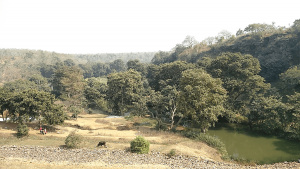
FORESTRY MANAGEMENT AND EXTENSION SERVICES
My experience in forestry management and extension services suggests that there are several key areas where these services are making significant contributions to the health of everyone in the world. These include:
- Forest restoration and conservation: By restoring and conserving degraded and deforested regions, we may improve the livelihoods and health of populations that depend on forests, improve the well-being of forest ecosystems, and minimise the effects of climate change. Extension services can play a critical role in raising awareness about the importance of forest conservation and restoration by providing technical assistance and support to those engaged in these activities.
- Sustainable forest management: Sustainable Forest management practices can help maintain the health and productivity of forest ecosystems while providing economic and social benefits to local communities. Extension services can play a critical role in promoting and facilitating the adoption of sustainable forest management practices, such as improved harvesting techniques, forest certification, and agroforestry.
- Forest-based livelihoods: Forests provide a range of products and services that can support sustainable livelihoods for forest-dependent communities, including non-timber forest products, ecotourism, forest-based enterprises, and increasingly, forest carbon credits. Extension services can help build the capacity of local communities to develop and manage these forest-based livelihoods, while also promoting sustainable resource use and conservation.
- Monitoring forest health and disease control: Invasive species, diseases, and pests pose a substantial danger to forest health as well as the health of communities that depend on healthy forests. In addition to offering technical support and aid for the management of disease and pests, extension services can be extremely important in assessing the health of forests.
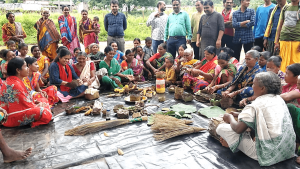 ©PRADAN
©PRADAN
The connection between forests and the livelihood of communities near forests are well established. While culturally there are strong connections between forest and forest-dependent communities, quite often harvesting produce from the forest forms an important and regular resource for these communities and it is important for both rich and poor (Maiden 2011). Extension works by government and non-government agencies help the communities to improve and sustainably manage these with the help of institutions, funding and linkages, which the communities may have difficulty securing on their own.
HORIZONTAL COMMUNICATION – ONE OF THE SUITABLE EXTENSION TOOLS IN JFM
In early 2000, I had an experience with the Gujarat Forest Department where we experimented with horizontal communication (Box 1) as a tool to improve Joint Forest Management (JFM) in conjunction with communities. As a collaborator in the programme, we found that horizontal communication played a crucial role in the success of community-based JFM, especially in the early stages of adoption. Community-based JFM involves the participation of local communities in the management of forest resources, in collaboration with the Forest Department. Extension and information dissemination customarily happened between the Forest Department and the community. The local non-government organisations (NGOs) also assisted in this critical role. The Joint Forest Management Cell (JFM Cell) which was assisting in the growth of JFM in the state decided to create a novel method of extension. In this model horizontal communication was designed keeping communication between the community members as central, with the Forest Department officials and facilitators only taking a supportive role.
|
Box 1. Features of Horizontal Communication One benefit of horizontal communication is that it can support the dismantling of organisational silos. It can result in better efficiency and effectiveness in attaining organisational goals by encouraging communication and collaboration among various departments or teams. In order to develop more thorough and well-coordinated solutions, horizontal communication can also help discover and address problems or difficulties that may be affecting many teams or departments. However, horizontal communication can also have some challenges. In some cases, it may lead to information overload or miscommunication if there are too many people involved in the exchange of information. Additionally, without proper communication protocols or guidelines, horizontal communication can lead to misunderstandings, conflicts, or even duplication of efforts. Overall, horizontal communication is a vital instrument for effective communication and collaboration within an organisation. By promoting open communication, sharing of knowledge and expertise, and breaking down silos, it can lead to improved organisational performance, employee engagement, and job satisfaction. |
Typically, communication in community-based JFM takes place between the forest officials, village-level JFM committees, and other community organisations and NGOs involved in forest management. The JFM committees consist of representatives from the local communities, who work closely with the Forest Department officials to manage the forests in their respective areas. The forest officials and JFM committee members communicate regularly to share information, discuss issues, and coordinate activities relevant to forest management.
In the model that was created, horizontal communication took place between communities. The leaders from multiple villages that had already gone through the experience of JFM and having similar cultural attributes are invited to a village that was about to initiate JFM. The two-to-three-day programme had many regular meetings, photo displays, discussions, training, role play, and information gathering sessions. The members invited from existing JFM villages discussed issues pertinent to forest management, shared best practices, and stories from their own experiences that consisted of both challenges met and opportunities realised. Most of this happened in a semi-formal setting in the local dialects.
Horizontal communication in community-based JFM in Gujarat had several benefits. It enabled the JFM committees to share information, knowledge, and expertise with each other, leading to better decision-making, problem-solving, and innovation. It also facilitated coordination and collaboration among the JFM committees and Forest Department officials, leading to more effective and efficient forest management. Additionally, horizontal communication helped build a culture of transparency, openness, and trust among the JFM committees, Forest Department officials, and local communities, which improved their engagement and participation in forest management activities.
LESSONS LEARNED
Horizontal communication resembles study tours in reverse in certain aspects. In an extension field trip, members travel to successful areas and study it in a natural setting. However, the knowledge reaches only a few in a village. Through horizontal communication, participants from successful regions visit the host community, where everyone — including women and children — can participate in the activity. This not only builds trust, but as we experienced, it also energises the entire village and the memorable event has the potential to be seen as a turning point for the whole village. When discussions are held in the village, the questions, answers, and information given frequently pertain to identifying solutions that are relevant to the entire village.
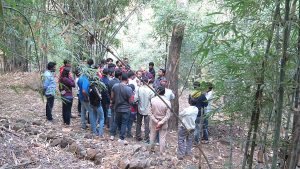 ©Ayush Jain
©Ayush Jain
Horizontal communication can be employed in any situation that calls for knowledge exchange in a peer-to-peer setting, even though the experience mentioned here was in the Joint Forest Management context. The ideas of horizontal communication can probably be incorporated into any of the programmes under the government’s National Action Plan on Climate Change that call for community adoption of new initiatives, technologies, and practices. Overall, it was felt that horizontal communication was a crucial aspect of community-based JFM in Gujarat, especially in the formative years when a village was looking to adopt JFM. It enabled JFM committees, Forest Department officials, and local communities to work collaboratively, share information, and coordinate activities, leading to better forest management outcomes.
CHALLENGES IN IMPLEMENTATION
However, there are also some challenges with horizontal communication. In community-based JFM in Gujarat, one of the significant challenges was the lack of adequate resources and infrastructure to support effective communication among the JFM committees and Forest Department officials. A high degree of planning and resources were required for horizontal communication as this was an ‘each village at a time’ approach. Planning required inviting community members from other successful JFM villages, arranging for their travel and stay, which may be in the village or a nearby guesthouse, arranging food for them and others, coordinating with the local Forest Department, arranging a place for people to gather, displaying items that included photographs of forests and activities from successful villages, having a talented team that can organise short plays and other local attractions with embedded messages, and having personnel skilled in participatory appraisal and discussions. Since these are done in a village setting, they need not be very expensive, and many local resources could be tapped with the help of the village leaders. However, a dedicated team skilled in various activities has to be prepared and put in place beforehand.
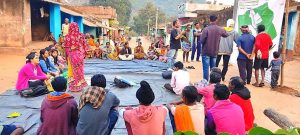 ©PRADAN
©PRADAN
Another challenge was the difficulty in coordinating communication among the large number of JFM committees and communities spread across the state. These had to be tackled differently through networks and Working Groups. Networks included National Level JFM Network, networks of villages that formed a federation at the state level. Other activities included creation of Divisional Level Working Groups and State Level Working Groups.
END NOTE
In conclusion, the theme of ‘Forests and Health’ for International Day of Forests 2023 underscores the importance of forests in supporting human health and well-being. It is a reminder of the critical role that forests play in sustaining life on Earth and the need for greater awareness and action to protect and manage forests sustainably. International Day of Forests presents a unique opportunity to educate the community, practitioners, students, and policymakers on the critical role of forests in supporting human health and well-being. It can also help advocate for increased resources and political will to address the challenges facing forests and their ecosystems, such as deforestation, climate change, and biodiversity loss.
It is important that we use effective methods to support the proliferation of forests and its better management by communities and local governments. Methods, such as horizontal communication, have the potential to break barriers and are applicable not only in forestry but also in almost all other allied sectors where peer to peer learning makes it an effective and culturally appropriate tool.
REFERENCE
Maiden J. 2011. New global study shows high reliance on forests among rural poor. CIFOR-ICRAF https://www.cifor.org/press-release/new-global-study-shows-high-reliance-on-forests-among-rural-poor/
 Dr Ajith Chandran is currently Managing Director of Development Interlinks International, a private limited company investing in socially relevant businesses. He is also on the advisory board of a few SMEs and startups. He advises NGOs, academic institutions and companies on a variety of areas, including mainstreaming Sustainable Development Goals. He is also an advisor to programmes on forest, water and environment.
Dr Ajith Chandran is currently Managing Director of Development Interlinks International, a private limited company investing in socially relevant businesses. He is also on the advisory board of a few SMEs and startups. He advises NGOs, academic institutions and companies on a variety of areas, including mainstreaming Sustainable Development Goals. He is also an advisor to programmes on forest, water and environment.
In 2001, he was a Member of a Committee set up by the Ministry of Environment and Forests (MoEF), India, for preparation of the National JFM Scheme for the 10th Five Year Plan. He was also an invited expert for the province of British Columbia’s Socio-Economic Extension Working Group, FORREX, Canada, from 2008 to the end of its term. Currently he chairs the Institute of Engineering and Technology’s (IET’s) Water Working Group. IET is set up to provide a global knowledge network.
He holds a doctorate from the University of British Columbia, Vancouver; a Chevening scholarship on Environmental Management from the University of Bradford; and a PGDFM from the Indian Institute of Forest Management, Bhopal. https://www.linkedin.com/in/drajithchandran/

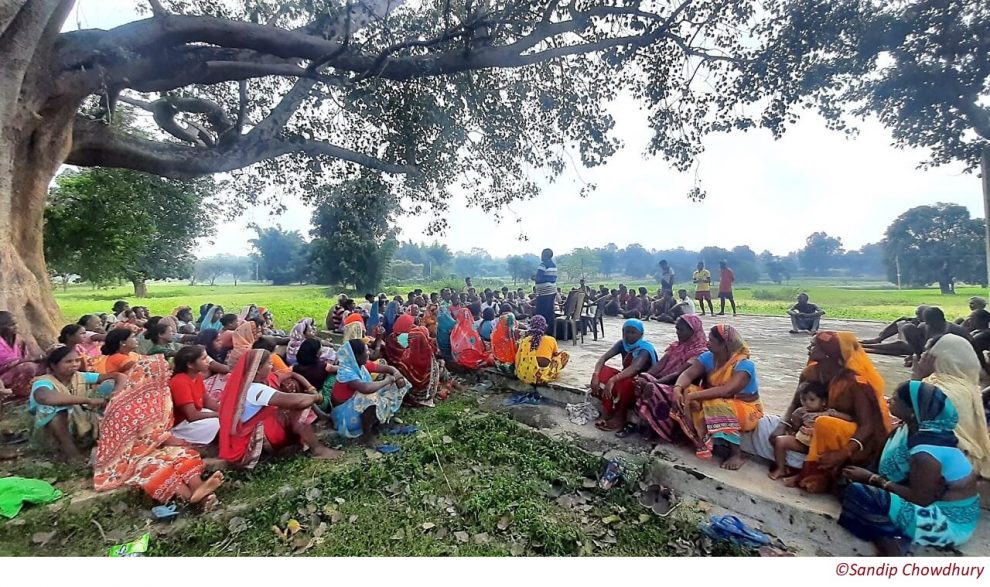

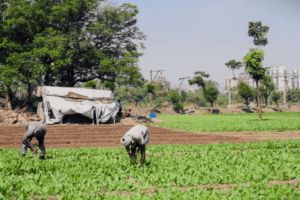

Add Comment